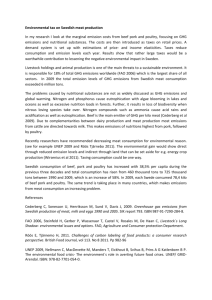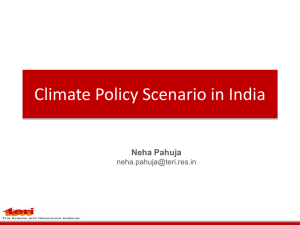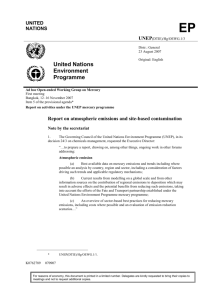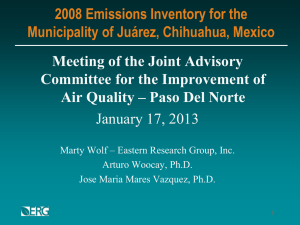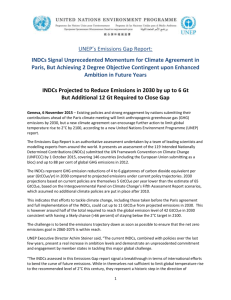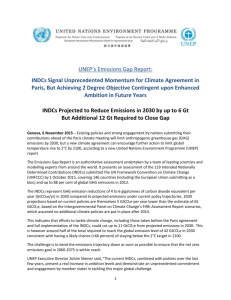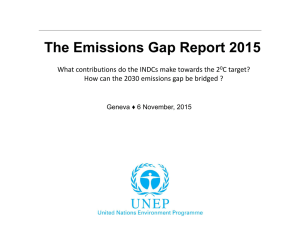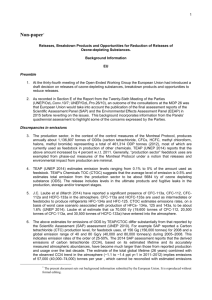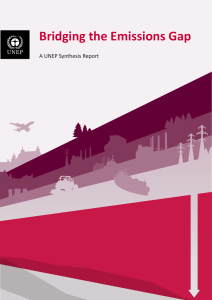7662-e-UNEPEmissionsGapReport2013
advertisement
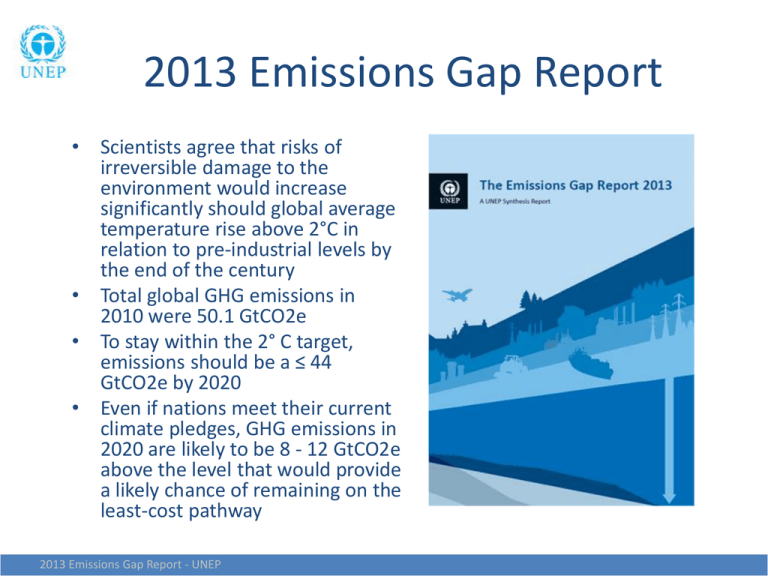
2013 Emissions Gap Report • Scientists agree that risks of irreversible damage to the environment would increase significantly should global average temperature rise above 2°C in relation to pre-industrial levels by the end of the century • Total global GHG emissions in 2010 were 50.1 GtCO2e • To stay within the 2° C target, emissions should be a ≤ 44 GtCO2e by 2020 • Even if nations meet their current climate pledges, GHG emissions in 2020 are likely to be 8 - 12 GtCO2e above the level that would provide a likely chance of remaining on the least-cost pathway 2013 Emissions Gap Report - UNEP 2013 Emissions Gap Report • It is still possible to attain the 2020 goal of 44 GtC02e/year through firm and rapid action • The following could bring the global community about halfway to closing the gap: – Tighten up the rules governing pledges in the climate negotiations (1-2 GtCO2e) – Implement the maximum reductions already pledged without conditions (2-3 GtCO2e) – Expand the scope of pledges (2 GtCO2e) 2013 Emissions Gap Report - UNEP 2013 Emissions Gap Report - UNEP 2013 Emissions Gap Report • Remaining gap could be bridged by further international and national action, including through “international cooperative initiatives” – Energy efficiency (2 GtCO e) – Renewable energy initiatives (1-3 GtCO e) – Fossil fuel subsidy reform (0.4 to 2 GtCO e) 2 2 2 • Three categories of initiatives – Global dialogues (e.g. G8, G20, ministerial level, industry, academia, and/or civil society) – Formal multilateral processes (international treaties e.g. Montreal Protocol or sector specific organizations e.g. International Civil Aviation Organization or International Maritime Organization) – Implementation initiatives (technical dialogues e.g. Mitigation and MRV Partnership or the Clean Energy Ministerial, and sector-specific initiatives e.g. Renewable Energy and Energy Efficiency Partnership, CCAC) 2013 Emissions Gap Report - UNEP 2013 Emissions Gap Report • For international cooperative initiatives to be effective, they must have: – A clearly defined vision & mandate – The right mix of participants appropriate for that mandate, going beyond traditional climate negotiators – Stronger participation from developing country actors – Sufficient funding & an institutional structure that supports implementation & follow-up, but maintains flexibility – Incentives for participants – Transparency & accountability mechanisms 2013 Emissions Gap Report - UNEP 2013 Emissions Gap Report • Energy efficiency (which includes inter alia buildings’ heating & cooling) is a priority mitigation opportunity • Fluorinated greenhouse gases is frequently listed as priority area for mitigation measures 2013 Emissions Gap Report - UNEP


